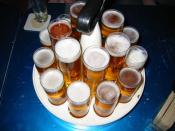Alcohol use by underage drinkers is a persistent public health problem in the United States, and alcohol is the most commonly used drug among adolescents. Accordingly, numerous approaches have been developed and studied that aim to prevent underage drinking. Some approaches are school based, involving curricula targeted at preventing alcohol, tobacco, or marijuana use. Other approaches are extracurricular, offering activities outside of school in the form of social or life skills training or alternative activities. Other strategies strive to involve the adolescents' families in the prevention programs. Policy strategies also have been implemented that have increased the minimum legal drinking age, reduced the commercial and social access of adolescents to alcohol, and reduced the economic availability of alcohol. Approaches involving the entire community also have been employed. Several programs (e.g., the Midwestern Prevention Project and Project Northland) have combined many of these strategies. KEY WORDS: underage drinking; prevention strategy; school-based prevention; curriculum; prevention through alternative activities; skills building; family focused prevention; alcohol or other drug (AOD) public policy strategy; minimum drinking age; availability or accessibility to minors; community-based prevention
Underage drinking is a persistent public health problem in the United States. Alcohol use initiation rates for children rise quickly from age 10 up to about age 13, when they reach more than 50 percent. Subsequently, initiation rates begin to slow again (Kosterman et al. 2000). Moreover, alcohol is the most commonly used drug among adolescents. For example, among eighth-grade students (who are ages 13 to 14) surveyed in the 1999 national representative sample of the Monitoring the Future study, 52 percent reported having consumed alcohol in their lifetime, and 25 percent reported having been drunk in their lifetime. In addition, 24 percent of the eighth graders reported having used alcohol in the past month and 9 percent reported...


